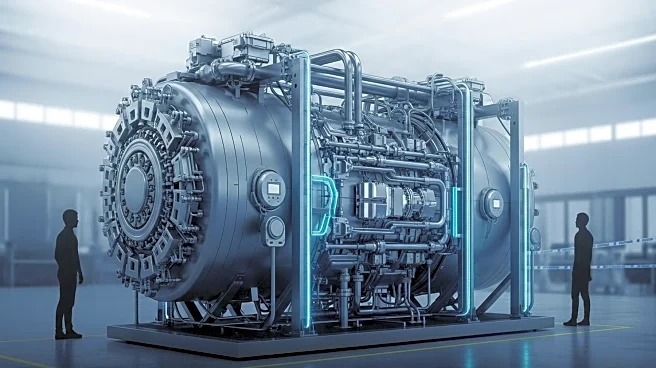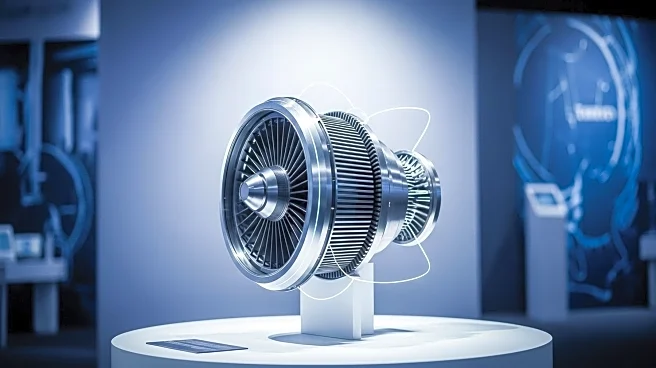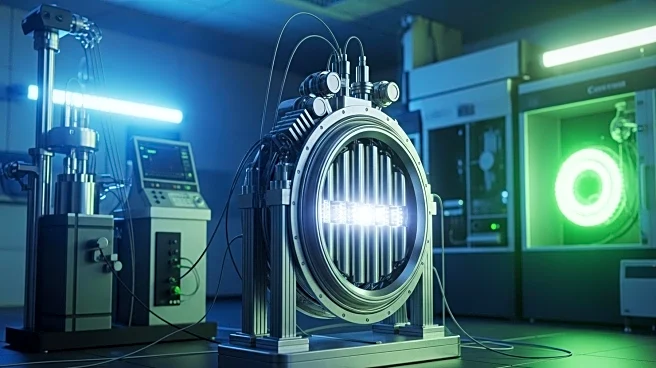What's Happening?
The Institute of Plasma Physics at the Chinese Academy of Sciences has developed a superconducting magnet that generates a magnetic field 700,000 times stronger than Earth's natural magnetic field. This new magnet achieved a strength of 35.1 tesla, surpassing the previous record of 32.35 tesla. The magnet's design incorporates high-temperature superconducting insert-coil technology, which is coaxially nested with low-temperature superconducting magnets. This development is part of China's efforts in nuclear fusion research, with potential applications in the International Thermonuclear Experimental Reactor (ITER) project.
Why It's Important?
This breakthrough in superconducting magnet technology is crucial for advancing nuclear fusion research, which aims to provide a sustainable and clean energy source. The ability to generate such a strong magnetic field could enhance the efficiency and feasibility of fusion reactors, potentially leading to significant advancements in energy production. The development also positions China as a leader in fusion research, contributing to global efforts to achieve practical nuclear fusion energy. The implications for energy security and environmental sustainability are profound, as fusion energy could reduce reliance on fossil fuels and decrease carbon emissions.










